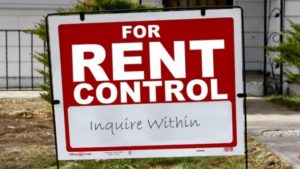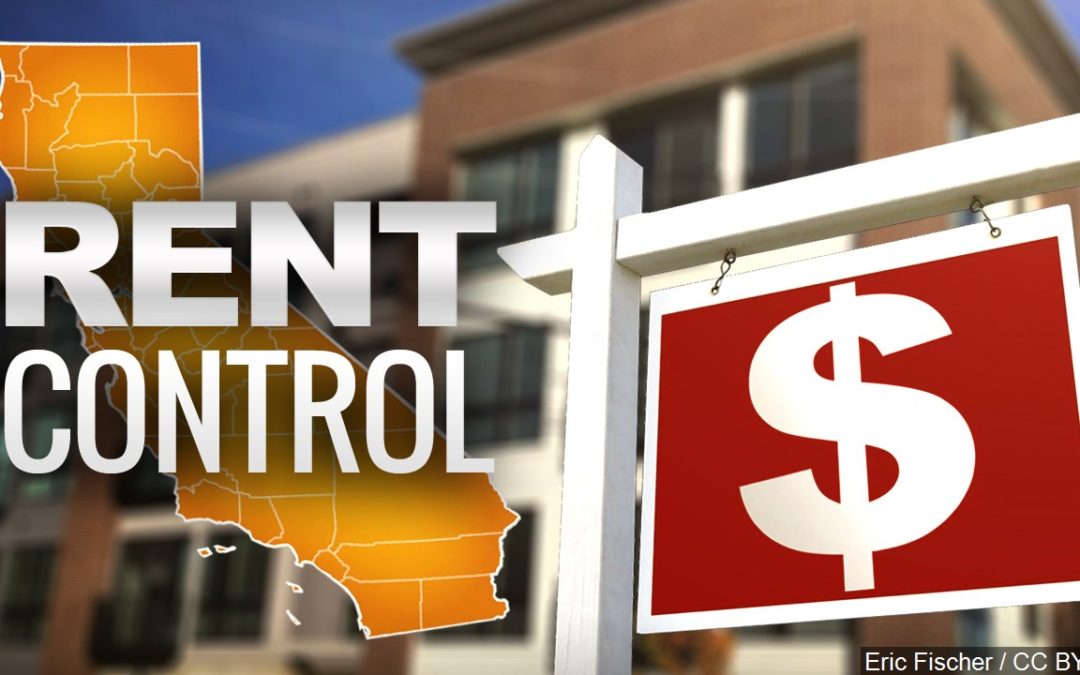CALIFORNIA STATE RENT CONTROL is here!
California is full of “Mom & Pop” Landlords, and maybe you’re one of them. Well, California Residential Landlords, what you don’t know can HURT you!
- Do you know if you fall under California Rent Control, or fall under one of the exceptions?
- Did you know that if you fall under the “TPA” that you might be stuck with a tenant for as long as you own the property?
- If you rent out a single family residence, did you know that failing to give your tenant a simple one page Notice can put you under Rent Control?
If you didn’t say YES to every question, then you need to read this article all about California State Rent Control, the California Tenant Protection Act of 2019, which was created by Assembly Bill 1482.
In this blog, we will discuss how this law was instituted, what it covers, and what it does not cover. We will also discuss some of the specific provisions of the law, such as the rent increase limits, “just cause” to evict, “no fault” and “at-fault” reasons for evictions, and landlord’s Noticing requirements.
Background
On October 7, 2019, California Governor Gavin Newsom signed Assembly Bill 1482 (AB 1482), which aimed to give Golden State residents relief from soaring rents and home prices by instituting rent control across the entire state.
This was in response to the concern of many Californians that they would not be able to afford their rent payments, which was confirmed in a survey conducted by the Public Policy Institute of California.
Coverage and Exemptions
AB 1482, or “the TPA”, affects about 2.4 million homes and apartments and is in force until 2030, and is found at Sections 1946.2 and 1947.12 of the California Civil Code. Important considerations for Real Estate Investors are that this State Rent Control (1) installs limits on how often and much rent can be increased, and (2) requires that a property owner have “just cause” to evict a tenant.
In other words, as long as the tenant is following the terms of the lease, a landlord cannot make them move out.
However, there are AB 1482 exemptions. The following are exempt from “just cause” eviction regulations AND also rent increase limits:
- Single-family primary residences of the owner, where the owner rents no more than two bedrooms or units, including accessory dwelling units and junior accessory dwelling units.
- A single-family rental house is exempt unless it’s owned by a real estate investment trust (REIT), a corporation, or an LLC where one of the members is a corporation… AND the tenant is given a notice that the property is exempt from the TPA in all new leases. This is IMPORTANT. The limited exemption for single-family homes does not apply where there is more than one dwelling unit on the same lot, or any second residential unit in the building that cannot be sold separately from the subject unit (such as an in-law unit).
- Owner-occupied Mobile Homes.
- A property containing two separate dwelling units within a single structure in which the owner occupied one of the units as the owner’s principal place of residence at the beginning of the tenancy, so long as the owner continues in occupancy, and neither unit is an accessory dwelling unit or a junior accessory dwelling unit. So duplex owners need to be careful.
- Units constructed in the last 15 years are exempt on a rolling basis. So that means if you build an ADU or a house now, you will be exempt from the TPA for the next 15 years… unless the law is amended.
- Housing accommodations in which the tenant shares bathroom or kitchen facilities with the homeowner.
- Units that are restricted to be affordable for low- or moderate-income residents, or are a nonprofit hospital, religious, adult or elder care residential facility.
- Dormitories owned and operated by an institution of higher education or a kindergarten and grades 1-12 school.
- Short-term rentals (“transient and tourist hotel occupancy”, i.e. AirBnB)
Just Cause to Evict
Landlords subject to the TPA cannot make a tenant move out without “Just Cause”, which is divided between “No-Fault” and “At-Fault” reasons.
All of the following would qualify as a just cause to evict a renter under the Tenant Protection Act:
- nonpayment of rent, which is an “at fault” reason,
- the owner moving themselves or a family member into a unit (which is a “no fault” reason),
- the owner substantially renovating (also “no fault”),
- the owner going out of business (also “no fault”),
- breach of a material term of the lease,
- nuisance, waste, unlawful, or criminal activity,
- refusal to sign a written extension or renewal of the lease,
- refusal to allow the owner to enter the unit
- and assigning or subletting without landlord’s approval
Eviction Provisions
Important: Eviction provisions apply only after (a) all tenants have lived in the unit for one year or more, or if (b) at least one tenant has occupied the unit for two years.
A tenancy may not be terminated without just cause, which must be stated in the termination notice.
As mentioned above, Just cause reasons are categorized as “at-fault” or “no-fault.”
This is an important distinction because relocation assistance is required in the case of no-fault evictions. When a no-fault notice of termination is served on the renter (with a 60 Day Notice, as we are talking about tenancies greater than one year here), the renter must also be informed of their right to relocation assistance or a rent waiver. In a rent waiver, the written notice should provide the amount of the rent waiver and that no rent is due for the last month of tenancy. Relocation assistance equal to one moth’s rent shall be provided within 15 calendar days of service of the notice to quit. The mere expiration of a lease or rental agreement is not a just cause; thus a California landlord had better like the tenant he takes on because he could be taking him on for life.
Rent Increase Limits and Exceptions under the TPA:
Alright, it’s that time again Investors, MATH time! For covered units, annual rent increases are limited to no more than 5% plus the percentage change in the cost of living for the region in which the property is located, or 10% whichever is lower.
The percentage change in the cost of living is calculated using the Consumer Price Index for All Urban Consumers for All Items for the metropolitan area in which the property is located, as published by the United States Bureau of Labor Statistics. If a regional index is not available, the CPI Index for All Urban Consumers for all items, as determined by the Department of Industrial Relations, shall apply. The math gets more complex in some instances.
It is important to note that there can be no more than two increases in a 12-month period, and the combined amount cannot exceed the lessor of [the local CPI + 5%] or 10%.
Good news for Landlords: There is no limit on the initial rent charged for a vacant unit.
Notices That Landlords Are Required to Give under the TPA:
All tenants in units covered by the state law must receive a notice explaining the “just cause” and rent cap protections.
For any tenancy commenced or renewed on or after July 1, 2020, the notice must be provided as an addendum to the lease or rental agreement, or as a written notice signed by the tenant with a copy provided to the tenant.
- “California law limits the amount your rent can be increased. See Section 1947.12 of the Civil Code for more information. California law also provides that after all of the tenants have continuously and lawfully occupied the property for 12 months or more or at least one of the tenants has continuously and lawfully occupied the property for 24 months or more, a landlord must provide a statement of cause in any notice to terminate a tenancy. See Section 1946.2 of the Civil Code for more information.”
Property owners must communicate with tenants and how violations of AB 1482 are enforced.
The notice must contain specific language that states that California law limits the amount a rent can be increased and that a landlord must provide a statement of cause in any notice to terminate a tenancy.
If a property owner claims an exemption because the property is a single family home or condominium, they must provide the following written notice to the resident. For any tenancy commenced or renewed on or after July 1, 2020, the notice required must be provided in the rental agreement. THIS IS IMPORTANT!
- “This property is not subject to the rent limits imposed by Section 1947.12 of the Civil Code and is not subject to the just cause requirements of Section 1946.2 of the Civil Code. This property meets the requirements of Sections 1947.12 (d)(5) and 1946.2 (e)(8) of the Civil Code and the owner is not any of the following: (1) a real estate investment trust, as defined by Section 856 of the Internal Revenue Code; (2) a corporation; or (3) a limited liability company in which at least one member is a corporation.”
If the owner fails to provide the required notice, then the single family rental property is not exempt from the just cause or rent cap regulations.
Enforcement of the TPA
AB 1482 can only be enforced in state court, and although no penalties are listed in the law itself, residents can sue for damages for wrongful eviction or unlawful business practices based on violations of the TPA.

Conclusion:
In conclusion, if you rent out residential property in California, it’s essential to understand your obligations under the rental law, specifically the Tenant Protection Act of 2019.
Communicating with your tenants is a critical aspect of compliance with the law, and failure to do so can result in legal action.
Understanding how violations of the TPA are enforced is also important to ensure that you’re complying with the law and avoiding potential legal issues.



Recent Comments